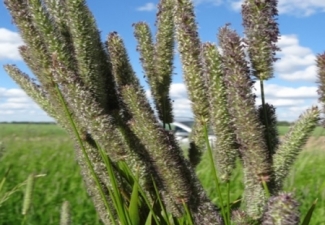Timothy-grass 'Jumis'

Species: Timothy-grass
Variety title: ‘Jumis’
|
Development: |
Obtained by making a selection |
|
Maintainer and representative of selection breeders: |
Derived Public Person State Priekuļi Cereal Breeding Institute |
|
Authors of the variety: |
V. Zeibots |
|
Registered: |
The variety has been included in Section “A” of Plant Variety Catalogue since 1 January 2006. |
|
Protection period of the variety: |
|
|
Morphological description:
|
Loose tussock high grass. Perennial, productive for 5 - 8 years and more. The crop is higher in first years. Undemanding, adapts to growth conditions well. One of the hardiest grasses in peat soils, well tolerates wetter meadows that are flooded for a short time. Grows best in sandy loam and loam soils rich in organic substances, as well as in wetter and cool clay soils. Tolerates short-term flooding, but does not tolerate shade. |
|
Economic characteristics: |
Winter hardiness is very good Mowing at the initial phase of ear-formation may not be delayed. At the end of flowering, timothy grass becomes hard rapidly and its digestibility deteriorates. Can be mown 2 times during vegetation period. In pasture mixtures can be sown together with low grasses and white clover, because in early phases of development they resemble digestibility of timothy-grass, perennial ryegrass or meadow fescue. Ripening - medium late, flowers in late June, early July. Regrowth rate - very good. Productivity - dry matter productivity - high (10-11 t ha-1) |
|
Quality: |
Nutritive value - high |
|
Susceptibility to diseases: |
Disease resistance - good. |
|
Use: |
It is suitable for the creation of mowed grasslands, the most appropriate component in grasslands is late red clover. Creates highly productive stands in combination with alfalfa and eastern galega, as well as species of grasses like meadow fescue, smooth brome and perennial ryegrass. Since 2008, the species has been included in the lists of plants for biological farming. |
|
Cultivation: |
For mowed grasslands, grow in mineral soils together with late or medium early red clover, while in cultivated grass bogs and wetter mineral soils with Alsike clover. |
|
For information: |
Baiba Ošmane |
